Hallo!
Here is another Q & D (Quick & Dirty) posting on a rifle we all know something about but rarely that much because it is generally held to be taboo are and the mark of a (so-called) Farb and the Kiss of Death for impressions as well as event use:
the Remington Model 1862 Contract Rifle.
What did he say? :) (He said the dreaded “Zouave Rifle." ;) :)
Shortly before Eliphalet Remington II died on August 12, 1861 his middle son Samuel and energetic agent (older son Philo was the inventive one along with Eliphalet III as the accountant) went to Washington D.C. on July 15th hoping to get a contract to revive their M1841 Rifle operation. Cleverly offering the full production of the Remington factory to the government, was successful, and on July 30, Ordnance General James Ripley wrote to request 10,000 stands of the upgraded/updated M1841 alterations at $20.00 each (a price “set” by Colt for Springfield contracts). The contract read “... .58 inch caliber, and to have three-leaf rear sight, and a cupped ramrod, with sword bayonet stud similar to those of the Harpers Ferry rifle model of 1855, in other aspects of the pattern of the rifles without bayonets, heretofore made by you for the department."
That was part of the drive started about 1854 at Harpers Ferry when the new .58 Minie system was about to be adopted calling for a new series of arms. Because there was an inventory of older .54 M1841 Rifles (aka Mississippi, Windsor, or Jaeger rifles) on hand, they had the clever idea of bringing them up to be on par with the forthcoming M1855 Rifle. The process of upgrading would involve reboring to the new .58 caliber, added a long range rear sight, and adding a provision for mounting a bayonet (sword or socket). A number of different rear sights as well as bayonets were used, some of which would require a new “'short" nose cap (aka upper barrel band).
When Samuel did not jump on it, Ripley sweetened the deal with a $100,000 investment to update and refurbish the machinery and production facilities. Still being generous, no delivery schedules or completion date was specified other than as soon as possible.
Those should have been the Remington "Model 1861 Contract Rifle."
Remington was “distracted” with their M1861 Army and Navy revolver contracts. That might have been okay, but a year passed with no activity or even one rifle being made which caught the notice of the War Department's Holt-Owen Commission which was charged in investigating fraud and war profiteering after a big blow up largely caused by General John Fremont's spending in the "west." That seemed to have been the impetus for concerns that fraud, political "pork,” and war-profiteering had been rampant since 1861. 1861 contracts were suspended pending review. In April of 1862, Remington was called in and questioned. Using it as an opportunity, he proposed to lower the price from $20 per stand to $17.00 on the M1841's IF he were to be given a M1861 Rifle-musket contract for 40,000 stands at $16.00 each. He wanted an additional contract for 40,000 M1841’s or 40,000 M1861’s, with the first 10,000 being at $17 a stand. Plus, if approved he would make the 5,000 revolvers at only $12 (Colt was getting $25 for the M1860 Army revolver).
The Ordnance Department needed rifles as well as Remington revolvers. The existing contract was thrown out, and replaced with a second one on August 11, 1862 for 10,000 stands at $17.00
Those should have been the "Remington Model 1862 Contract Rifle."
On August 20, 1862, just nine days after the second contract for 10,000 updated M1841 rifles at $17 each was given... Remington received a new contract for 40,000 M1861 Rifle-muskets at $16.00 each.
Even though they should have been in trouble, they "conveniently" received another contract on December 13, 1863 for the 2,500 M1841 short from the previous contract giving them more time. Plus, on December 14, 1863 the $16 price of the M1861 RM's was bumped up to $18 each likely as an incentive for getting them made instead as the new Model 1863 Rifle-Musket then going into production, along with 5,000 more Army revolvers. The Ordnance Dept., had tried to get Remington to make M1861's as early as the Spring of 1862 but failed; Remington wanting $18 and the government offering $16. Some believe the issue was financial- as it was more profitable to make the M1862 Contract Rifles (Zouaves) at $17 each than the M1861 RM's at $16.00 so profit priority favored the M1862 Contract Rifles. The first delivery batch of M183 RM’s was set for January 1864 but the M1862 Rifles got in the way and the first batch only went out in June of 1864. As before Remington was given some slack, and allowed to finish up after the War with their last delivery made in March of 1866. Only somewhere after 1865, they eventually retooled and switched over to making the M1863 Rifle-Muskets that the December 1863 contract was actually for.
Remington had problems with both of their M1861 and M1863 RM's but the inspectors gave them yet another break by not rejecting them and just discounting or paying typically $2.00, $1.00, .25, or .10 cents off the full $18 price. (It was usual for the Ordnance Dept. to allow contractors to run out their contract for M1861 RM's even though "obsolete" due to the newer M1863 and M1864 RM's, and in Remington's case even the new breechloading M1865 and M1866 trapdoor rifles were coming out. So, one sees 1864 and 1865 dated Remington Contract M1861's.
But Remington was busy with revolver and other business ventures such as the Remington carbine, and got off to a slow start. Somehow and somewhere in this, Remington ditched the old M1841 pattern, and came up with a new design that was something of a hybrid between the M1841 and the M1855 Rifles. The first 500 updated new "M1862 Contract Rifles" were delivered to Watervliet Arsenal on April 18, 1863. Followed by batches of 1,000 roughly every month. But by November 1863 they were going to be 2,500 rifles short. The Ordnance Department gave Remington a break believed due to their undercutting Colt revolver prices which also drove down all competitors' prices. A third contract was created to “absorb” the missing 2500 rifles on December 13, 1863.
Remington delivered 1,000 more on December 23, another 1,000 January 6, 1864, and the last batch of 500 January 1864 to complete the "third contract” and covering their 2,500 second contract shortfall.
Somewhere in the production Remington's workers seemed to have had a bad couple or three weeks. The inspectors were already turning a blind eye in inspecting AND approving rifles well different than what the contract said they had to be (Remington M1862 Contract rifles instead of updated M1841 Rifles). When 703 in a batch failed inspection, Remington was given another break when they just deducted a .10 cent fine and labelled them as "second class arms. (Which is odd, not so much that it was done as a favor or "kickback of sorts... but rather because the M1863 rifles are usually always excellently made.) That set a standard for accepting Remington that were flawed and should have been rejected.
Remington had problems with both of their M1861 and M1863 RM's but the inspectors gave them yet another break by not rejecting them and just discounting or paying typically $2.00, $1.00, .25, or .10 cents off the full $18 price. (It was usual for the Ordnance Dept. to allow contractors to run out their contract for M1861 RM's even though "obsolete" due to the newer M1863 and M1864 RM's, and in Remington's case even the new breechloading M1865 and M1866 trapdoor rifles were coming out. So, one sees 1864 and 1865 dated Remington Contract M1861's.
One run, between May 31, 1864 and March 24, 1866 saw 326 accepted only as “4th Class” arms” with about 10% being accepted as ‘2nd Class” arms only.
All 10,001 were delivered in batches as completed to Watervliet Arsenal in New York. All 10,000 were still there as late as May 15, 1866. The "one” credited in the 1001 delivered on October 23, 1863 was the sample to have been used by the inspectors in judging the work according to the contract. Which was another “break” as the first batch of M1862 rifles arrived in April of 1863 seven months earlier.
On August 8, 1907, they were sold off as surplus by the New York Ordnance Agency to Francis Bannerman from "Bannerman's Island for .54 cents each.
Due to their never (use of a universal so noted) issued or used, original Remington M1862 Contract Rifles are often found in excellent, minty, and even mint condition.
Because of the 1863 delivery dates, (but not the 1864 delivery dates), the Remington Model 1862 Contract Rifle is usually always called the Contract Model 1863. By the same reasoning, never the M1864. This is unusual for the Ordnance Dept such as say with M1855 Rifle not going into production until 1857/58).
It is believed that Remington was allowed to “get away" with shenanigans with his M1841 updated contract partially due to Remington's contribution to the Federal war effort. But more so as a favor for their having accepted revolver contracts at a price below that of Colt. It knocked Colt for a loop and out of competition, but it also saved the government not only money with Colt but also with all of the other revolver makers who had to drop their prices to be "competitive." As a result, the Ordnance Department looked the other way when Remington defaulted. Plus, inspectors that should have rejected the Model 1862 Contract Rifle for not being "to contract" as ordered... simply stamped them as "approved" and placed them in storage never to be issued. And, instead of rejecting or failing flawed work, and sending them back to the factory as rejects... just docked Remington some coins or a dollar or two and approved them as “second class arms" or even "fourth class arms."
There was NO 1863 contract given to Remington to name a rifle after. But, just like the Remington M1863 New Model Army Revolver, that we moderns made the "M1858," the Remington 1862 contract rifle became the 1863 rifle.
I have not researched the "Zouave Rifle" name in history. Some hold it is a Bannerman ad creation. Others hold that it was invented in the 1950s. It is not CW Period in any event, but that is what we call it.
The Remington Model 1862 Contract Rifle aka "Remington Model 1863 Contract Rifle bka "Zouave Rifle” was the first mass produced, commercially available, reproduction CW long arm. It came out circa 1957/58, it quickly became popular in the N-SSA among people not shooting originals or originals or re-barreled originals. The first were made by Antonio Zoli and imported by a number of vendors including Navy Arms. A friend of mine's father bought one with an XXXX serial number in 1966 for $65. They were still $85 in places in 1974. Today used Zoli’s are somewhat collectable, and go for $300-$400.
Even though there is better research now than in the mid 1950's, the Italians still make them even though they were not used in the Civil War as reenactors still buy them. (Not to mention non-reenactors, hunters, BP enthusiasts)..
References:
Edwards, William. (1962). "Civil War Guns." Thomas Publications. Gettysburg, PA.
Fuller, Claude. (1958). "The Rifled Musket." Bonanza Books, NY.
Marcot, Roy. (2005). "The History of Remington Firearms." The Lyons Press, Guildford, CT.
Moller, George. (2011). American Military Shoulder Arms. Volume III: Flintlock Alterations and Muzzleloading Percussion Shoulder Arms 1840-1865". University of New Mexico Press, Albuquerque.
Reilly, Robert. (1970). "United States Military Small Arms 1816-1865: the Federal Firearms of the Civil War." The Gun Room Press, Highland Park, NJ.

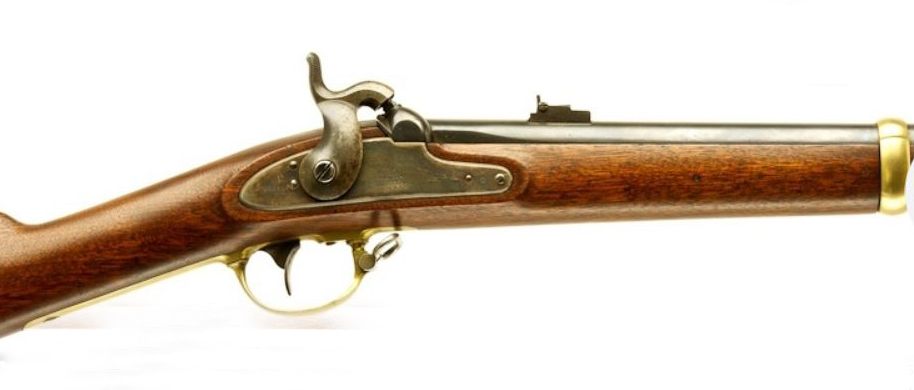
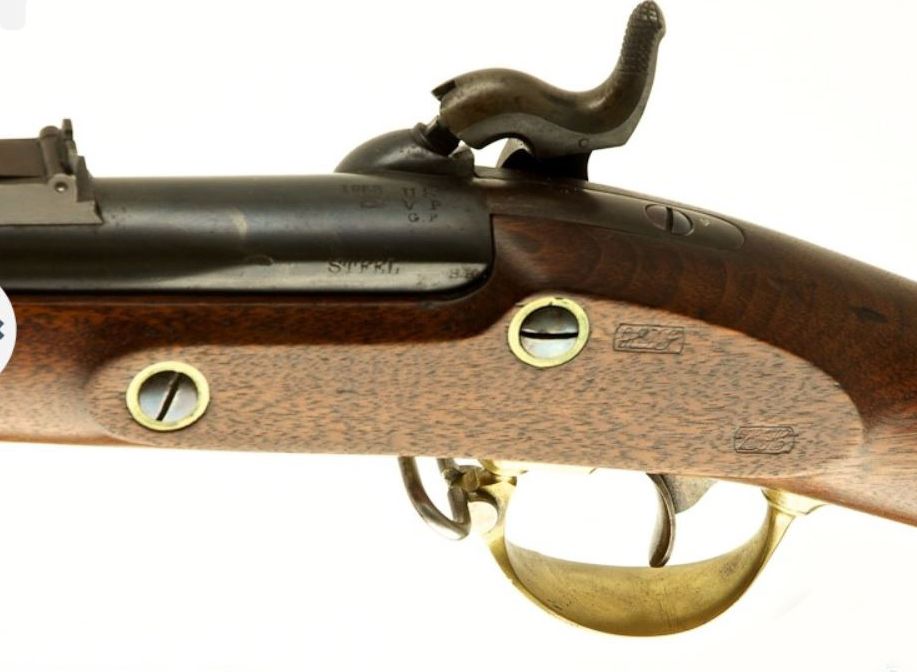
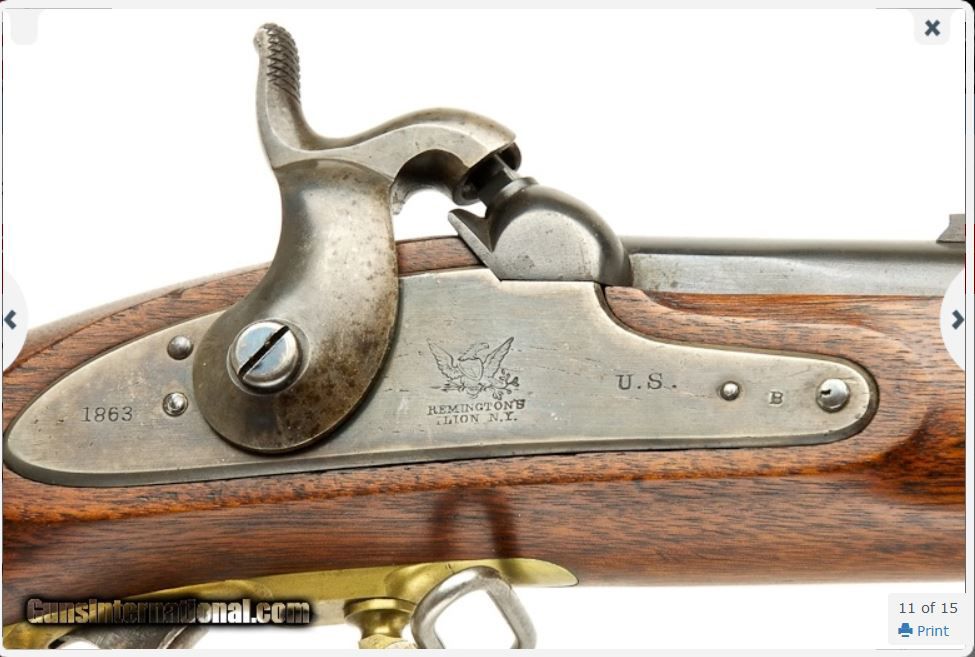

- - - Updated - - -
Extras:
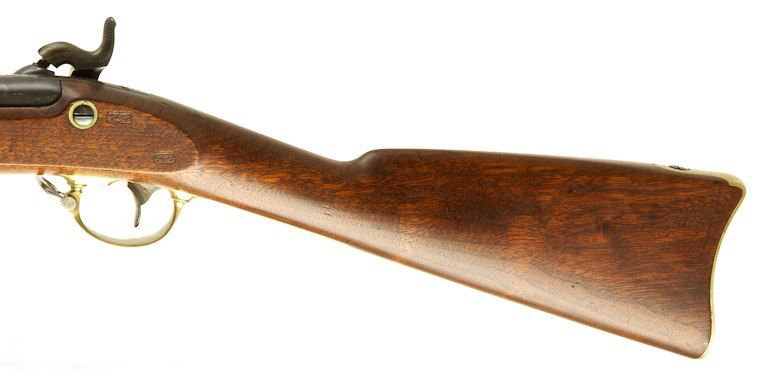

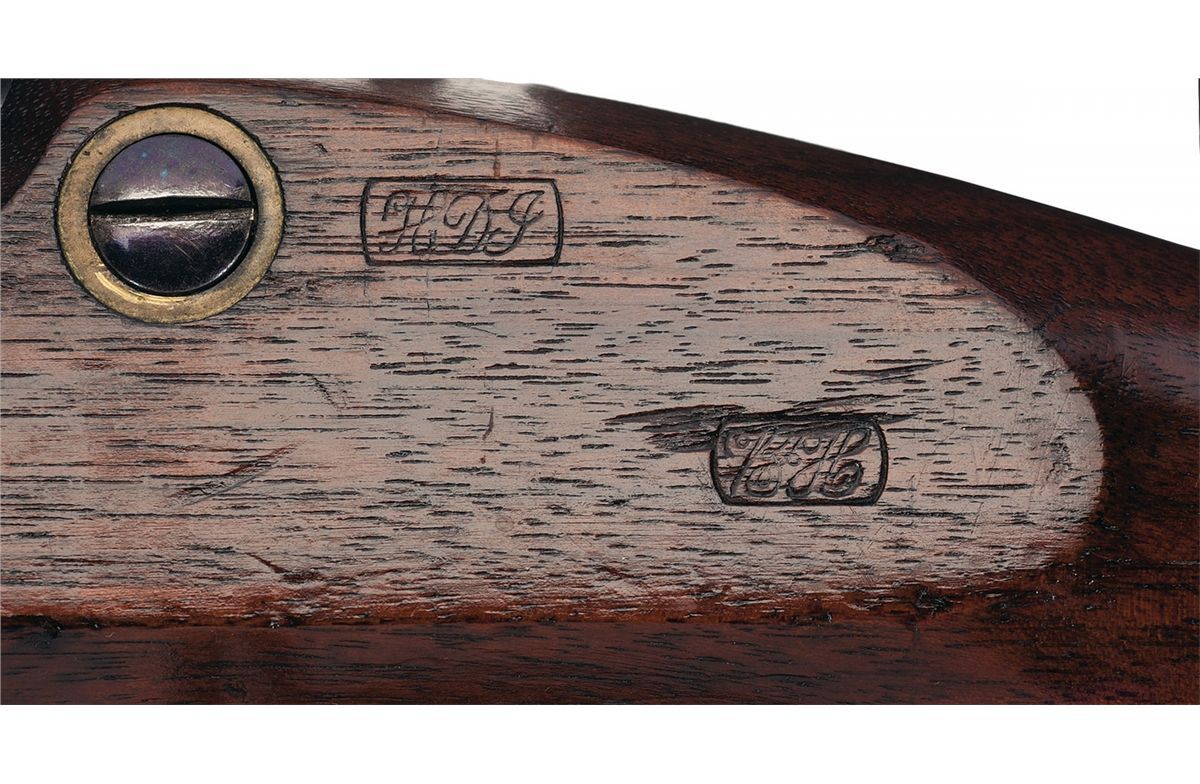
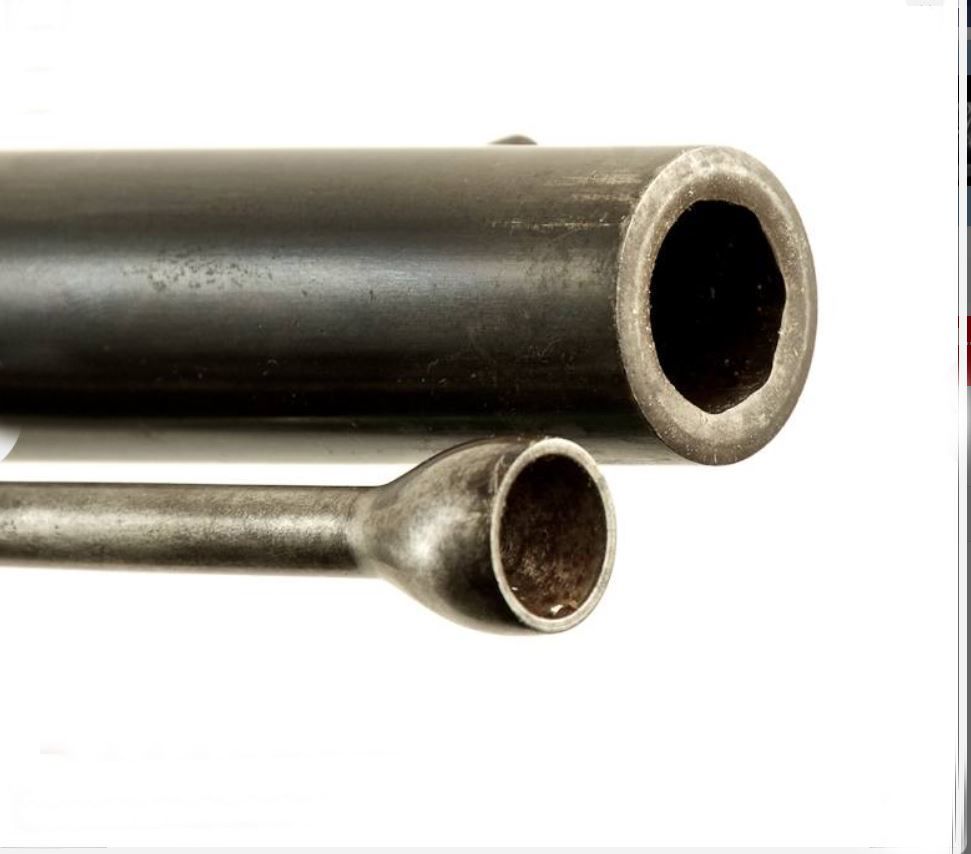
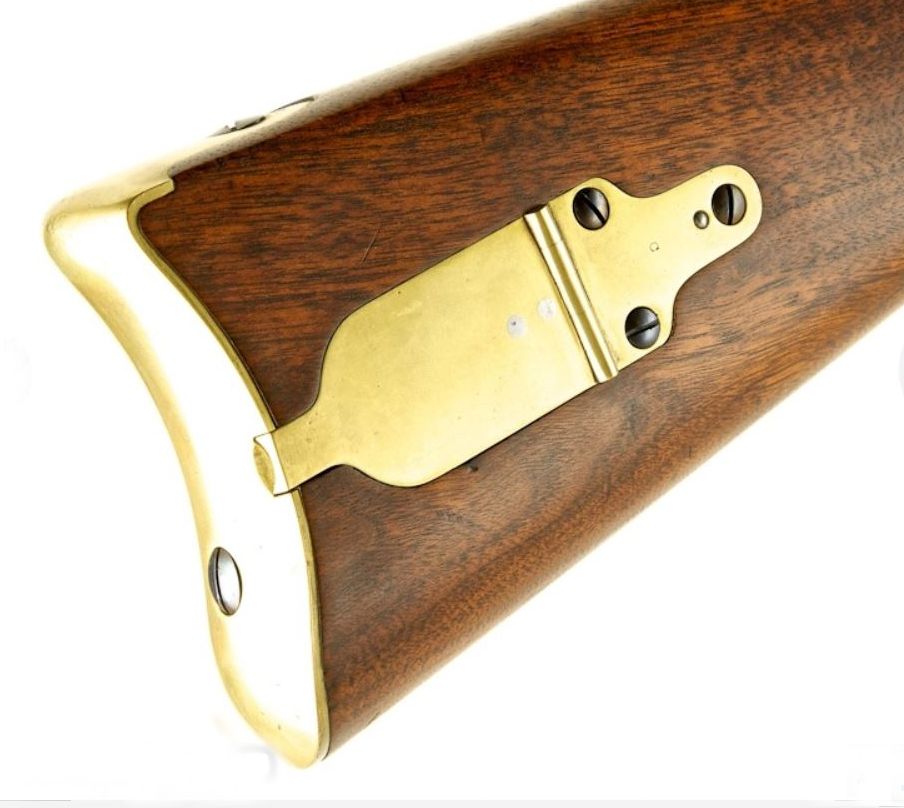
Curt
- - - Updated - - -
One more that did not fit in:

Curt
Here is another Q & D (Quick & Dirty) posting on a rifle we all know something about but rarely that much because it is generally held to be taboo are and the mark of a (so-called) Farb and the Kiss of Death for impressions as well as event use:
the Remington Model 1862 Contract Rifle.
What did he say? :) (He said the dreaded “Zouave Rifle." ;) :)
Shortly before Eliphalet Remington II died on August 12, 1861 his middle son Samuel and energetic agent (older son Philo was the inventive one along with Eliphalet III as the accountant) went to Washington D.C. on July 15th hoping to get a contract to revive their M1841 Rifle operation. Cleverly offering the full production of the Remington factory to the government, was successful, and on July 30, Ordnance General James Ripley wrote to request 10,000 stands of the upgraded/updated M1841 alterations at $20.00 each (a price “set” by Colt for Springfield contracts). The contract read “... .58 inch caliber, and to have three-leaf rear sight, and a cupped ramrod, with sword bayonet stud similar to those of the Harpers Ferry rifle model of 1855, in other aspects of the pattern of the rifles without bayonets, heretofore made by you for the department."
That was part of the drive started about 1854 at Harpers Ferry when the new .58 Minie system was about to be adopted calling for a new series of arms. Because there was an inventory of older .54 M1841 Rifles (aka Mississippi, Windsor, or Jaeger rifles) on hand, they had the clever idea of bringing them up to be on par with the forthcoming M1855 Rifle. The process of upgrading would involve reboring to the new .58 caliber, added a long range rear sight, and adding a provision for mounting a bayonet (sword or socket). A number of different rear sights as well as bayonets were used, some of which would require a new “'short" nose cap (aka upper barrel band).
When Samuel did not jump on it, Ripley sweetened the deal with a $100,000 investment to update and refurbish the machinery and production facilities. Still being generous, no delivery schedules or completion date was specified other than as soon as possible.
Those should have been the Remington "Model 1861 Contract Rifle."
Remington was “distracted” with their M1861 Army and Navy revolver contracts. That might have been okay, but a year passed with no activity or even one rifle being made which caught the notice of the War Department's Holt-Owen Commission which was charged in investigating fraud and war profiteering after a big blow up largely caused by General John Fremont's spending in the "west." That seemed to have been the impetus for concerns that fraud, political "pork,” and war-profiteering had been rampant since 1861. 1861 contracts were suspended pending review. In April of 1862, Remington was called in and questioned. Using it as an opportunity, he proposed to lower the price from $20 per stand to $17.00 on the M1841's IF he were to be given a M1861 Rifle-musket contract for 40,000 stands at $16.00 each. He wanted an additional contract for 40,000 M1841’s or 40,000 M1861’s, with the first 10,000 being at $17 a stand. Plus, if approved he would make the 5,000 revolvers at only $12 (Colt was getting $25 for the M1860 Army revolver).
The Ordnance Department needed rifles as well as Remington revolvers. The existing contract was thrown out, and replaced with a second one on August 11, 1862 for 10,000 stands at $17.00
Those should have been the "Remington Model 1862 Contract Rifle."
On August 20, 1862, just nine days after the second contract for 10,000 updated M1841 rifles at $17 each was given... Remington received a new contract for 40,000 M1861 Rifle-muskets at $16.00 each.
Even though they should have been in trouble, they "conveniently" received another contract on December 13, 1863 for the 2,500 M1841 short from the previous contract giving them more time. Plus, on December 14, 1863 the $16 price of the M1861 RM's was bumped up to $18 each likely as an incentive for getting them made instead as the new Model 1863 Rifle-Musket then going into production, along with 5,000 more Army revolvers. The Ordnance Dept., had tried to get Remington to make M1861's as early as the Spring of 1862 but failed; Remington wanting $18 and the government offering $16. Some believe the issue was financial- as it was more profitable to make the M1862 Contract Rifles (Zouaves) at $17 each than the M1861 RM's at $16.00 so profit priority favored the M1862 Contract Rifles. The first delivery batch of M183 RM’s was set for January 1864 but the M1862 Rifles got in the way and the first batch only went out in June of 1864. As before Remington was given some slack, and allowed to finish up after the War with their last delivery made in March of 1866. Only somewhere after 1865, they eventually retooled and switched over to making the M1863 Rifle-Muskets that the December 1863 contract was actually for.
Remington had problems with both of their M1861 and M1863 RM's but the inspectors gave them yet another break by not rejecting them and just discounting or paying typically $2.00, $1.00, .25, or .10 cents off the full $18 price. (It was usual for the Ordnance Dept. to allow contractors to run out their contract for M1861 RM's even though "obsolete" due to the newer M1863 and M1864 RM's, and in Remington's case even the new breechloading M1865 and M1866 trapdoor rifles were coming out. So, one sees 1864 and 1865 dated Remington Contract M1861's.
But Remington was busy with revolver and other business ventures such as the Remington carbine, and got off to a slow start. Somehow and somewhere in this, Remington ditched the old M1841 pattern, and came up with a new design that was something of a hybrid between the M1841 and the M1855 Rifles. The first 500 updated new "M1862 Contract Rifles" were delivered to Watervliet Arsenal on April 18, 1863. Followed by batches of 1,000 roughly every month. But by November 1863 they were going to be 2,500 rifles short. The Ordnance Department gave Remington a break believed due to their undercutting Colt revolver prices which also drove down all competitors' prices. A third contract was created to “absorb” the missing 2500 rifles on December 13, 1863.
Remington delivered 1,000 more on December 23, another 1,000 January 6, 1864, and the last batch of 500 January 1864 to complete the "third contract” and covering their 2,500 second contract shortfall.
Somewhere in the production Remington's workers seemed to have had a bad couple or three weeks. The inspectors were already turning a blind eye in inspecting AND approving rifles well different than what the contract said they had to be (Remington M1862 Contract rifles instead of updated M1841 Rifles). When 703 in a batch failed inspection, Remington was given another break when they just deducted a .10 cent fine and labelled them as "second class arms. (Which is odd, not so much that it was done as a favor or "kickback of sorts... but rather because the M1863 rifles are usually always excellently made.) That set a standard for accepting Remington that were flawed and should have been rejected.
Remington had problems with both of their M1861 and M1863 RM's but the inspectors gave them yet another break by not rejecting them and just discounting or paying typically $2.00, $1.00, .25, or .10 cents off the full $18 price. (It was usual for the Ordnance Dept. to allow contractors to run out their contract for M1861 RM's even though "obsolete" due to the newer M1863 and M1864 RM's, and in Remington's case even the new breechloading M1865 and M1866 trapdoor rifles were coming out. So, one sees 1864 and 1865 dated Remington Contract M1861's.
One run, between May 31, 1864 and March 24, 1866 saw 326 accepted only as “4th Class” arms” with about 10% being accepted as ‘2nd Class” arms only.
All 10,001 were delivered in batches as completed to Watervliet Arsenal in New York. All 10,000 were still there as late as May 15, 1866. The "one” credited in the 1001 delivered on October 23, 1863 was the sample to have been used by the inspectors in judging the work according to the contract. Which was another “break” as the first batch of M1862 rifles arrived in April of 1863 seven months earlier.
On August 8, 1907, they were sold off as surplus by the New York Ordnance Agency to Francis Bannerman from "Bannerman's Island for .54 cents each.
Due to their never (use of a universal so noted) issued or used, original Remington M1862 Contract Rifles are often found in excellent, minty, and even mint condition.
Because of the 1863 delivery dates, (but not the 1864 delivery dates), the Remington Model 1862 Contract Rifle is usually always called the Contract Model 1863. By the same reasoning, never the M1864. This is unusual for the Ordnance Dept such as say with M1855 Rifle not going into production until 1857/58).
It is believed that Remington was allowed to “get away" with shenanigans with his M1841 updated contract partially due to Remington's contribution to the Federal war effort. But more so as a favor for their having accepted revolver contracts at a price below that of Colt. It knocked Colt for a loop and out of competition, but it also saved the government not only money with Colt but also with all of the other revolver makers who had to drop their prices to be "competitive." As a result, the Ordnance Department looked the other way when Remington defaulted. Plus, inspectors that should have rejected the Model 1862 Contract Rifle for not being "to contract" as ordered... simply stamped them as "approved" and placed them in storage never to be issued. And, instead of rejecting or failing flawed work, and sending them back to the factory as rejects... just docked Remington some coins or a dollar or two and approved them as “second class arms" or even "fourth class arms."
There was NO 1863 contract given to Remington to name a rifle after. But, just like the Remington M1863 New Model Army Revolver, that we moderns made the "M1858," the Remington 1862 contract rifle became the 1863 rifle.
I have not researched the "Zouave Rifle" name in history. Some hold it is a Bannerman ad creation. Others hold that it was invented in the 1950s. It is not CW Period in any event, but that is what we call it.
The Remington Model 1862 Contract Rifle aka "Remington Model 1863 Contract Rifle bka "Zouave Rifle” was the first mass produced, commercially available, reproduction CW long arm. It came out circa 1957/58, it quickly became popular in the N-SSA among people not shooting originals or originals or re-barreled originals. The first were made by Antonio Zoli and imported by a number of vendors including Navy Arms. A friend of mine's father bought one with an XXXX serial number in 1966 for $65. They were still $85 in places in 1974. Today used Zoli’s are somewhat collectable, and go for $300-$400.
Even though there is better research now than in the mid 1950's, the Italians still make them even though they were not used in the Civil War as reenactors still buy them. (Not to mention non-reenactors, hunters, BP enthusiasts)..
References:
Edwards, William. (1962). "Civil War Guns." Thomas Publications. Gettysburg, PA.
Fuller, Claude. (1958). "The Rifled Musket." Bonanza Books, NY.
Marcot, Roy. (2005). "The History of Remington Firearms." The Lyons Press, Guildford, CT.
Moller, George. (2011). American Military Shoulder Arms. Volume III: Flintlock Alterations and Muzzleloading Percussion Shoulder Arms 1840-1865". University of New Mexico Press, Albuquerque.
Reilly, Robert. (1970). "United States Military Small Arms 1816-1865: the Federal Firearms of the Civil War." The Gun Room Press, Highland Park, NJ.





- - - Updated - - -
Extras:





Curt
- - - Updated - - -
One more that did not fit in:

Curt






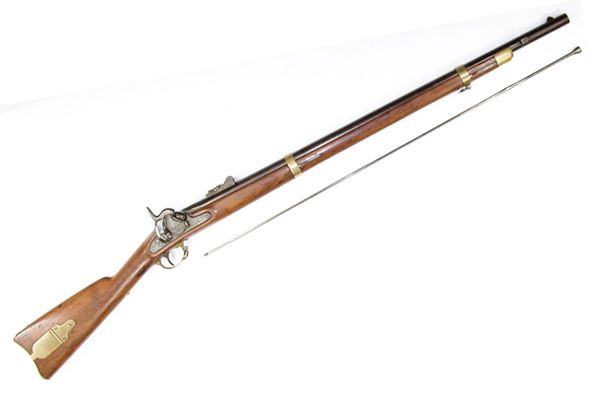
Comment